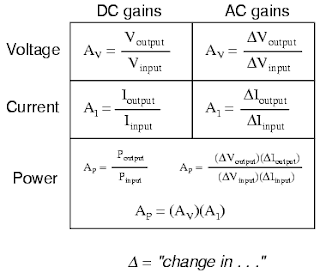The power factor or power factor (pf) will be enlarged or increased when the value of cos θ close to the value 1 or the angle θ will approach angle 0.
As described at the beginning was that the Q or the reactive power is actually the power losses and minimizing as much as possible we, meaning the value of the average power fixed and the value of reactive power that we will minimize the power minimized the overall look. The P value does not change that changed is the value associated with Q because Q component L or C, therefore improving the power factor then we have to put in parallel component of L or C. Why do we have to put in parallel? because the early goal we make a fixed value or constant P.
By knowing any two values of the Voltage, Current or Resistance quantities we can use Ohms Law to find the third missing value. Ohms Law is used extensively in electronics formulas and calculations so it is "very important to understand and accurately remember these formulas".
To find Voltage (V)
[V = I x R] V (volts) = I (amps) x R (Ω)
To find Current (I)
[I = V ÷ R] I (amps) = V (volts) ÷ R (Ω)
To find Resistance (R)
[R = V ÷ I] R (Ω) = V (volts) ÷ I (amps)
It is sometimes easier to remember Ohms law relationship by using pictures. Here the three quantities of V, I and R have been superimposed into a triangle (affectionately called the Ohms Law Triangle) giving voltage at the top with current and resistance at the bottom. This arrangement represents the actual position of each quantity in the Ohms law formulas.
Electrical Power, (P) in a circuit is the amount of energy that is absorbed or produced within the circuit. A source of energy such as a voltage will produce or deliver power while the connected load absorbs it. The quantity symbol for power is P and is the product of voltage multiplied by the current with the unit of measurement being the Watt (W) with prefixes used to denote milliwatts (mW = 10-3W) or kilowatts (kW = 103W). By using Ohm's law and substituting for V, I and R the formula for electrical power can be found as:
To find Power (P)
[P = V x I] P (watts) = V (volts) x I (amps)
Also,
[P = V2 ÷ R] P (watts) = V2 (volts) ÷ R (Ω)
Also,
[P = I2 x R] P (watts) = I2 (amps) x R (Ω)
Again, the three quantities have been superimposed into a triangle this time called the Power Triangle with power at the top and current and voltage at the bottom. Again, this arrangement represents the actual position of each quantity in the Ohms law power formulas.


Tidak ada komentar:
Posting Komentar